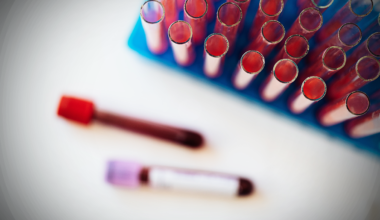This autumn, when the European Chemical Agency (ECHA) closed the book on its six-month-long public consultation for the proposal to ban PFAS in the EU, it did so with a record-breaking number of comments. The agency received over 5600 comments from 4400 organisations, companies and individuals.
As the ban is proposed for the EU only and not globally, you would be excused to think that the consultation would be a predominantly European affair. However, since many PFAS producers and users are based outside of Europe and rely on an undisturbed flow of PFAS chemicals in the global supply chain, the public consultation has received global input.
But no other non-EU country is even close to the level of comments that Japanese industry has made. In fact, Japan is the second largest contributor to the PFAS consultation overall. Only the German industry has given more input.
Get all the latest news!
Subscribe to our newsletter.
When ECHA presented the details behind the consultation, the top three contributors were:
- Sweden (1369 comments)
- Germany (1298 comments)
- Japan (938 comments)
But, Sweden’s many comments are due to a campaign organised by the Swedish Society for Nature Conservation, which lets individuals show support for the ban. Over 90 per cent of Sweden’s input originates from this campaign, but as all comments were non-technical, they will not be considered in the overall evaluation.
That means Germany has the most comments, and Japan is number two, well ahead of number three, Belgium, with 303 comments. In total, the Japanese industry accounts for almost 20 per cent of all comments in the consultation. Few other national industries have been so adamant in opposing any effort that would halt the use of PFAS chemicals globally.
A coordinated effort to oppose the ban
Japan is no stranger to chemical contamination. The country even has a convention named after one of its cities, Minamata, which experienced severe poisoning after industrial wastewater was discharged into Minamata Bay in the 50s. The Minimata Convention is an international treaty that aims to protect humans and the environment from the effects of mercury.
But despite the history, combined with Japan having one of the world’s largest chemical industries and many Japanese companies producing or using PFAS chemicals, the attention paid to these chemicals has been far less than in the US and EU, at least in the public domain.
In the chemical industry, it’s a whole different story. When scratching the surface to see what’s behind the many comments in the PFAS consultation, it is evident that somebody coordinated the flood of input.
“A webinar laying out in detail how businesses should protest the ban”
In March of 2023, the Conference of Fluoro Chemical Product Japan (FCJ), an association of fluorochemical manufacturers established in 2021, arranged a webinar laying out in detail how businesses should protest the ban. It was also said that “not providing an opinion is an admission by the individual company/organisation that they accept the proposed restriction.”
During the webinar, it was stressed that companies should oppose the ban independently instead of using a unified voice, as strength in numbers would increase the urgency of the call. The strategy also included examples of how the ban should be opposed by pointing out the lack of alternatives and questioning the scientific evidence for banning PFAS. In addition, the FCJ also produced a paper on its view of the PFAS ban, which has been widely circulated by among people involved in the process.
The country is dealing with nationwide PFAS pollution
About the same time as the Japanese industry was preparing its attempt to halt the PFAS ban, a Japanese study was released by two Kyoto University professors in which they had tested the blood of 551 people for four PFAS substances: PFOS, PFHxS, PFOA, and PFNA.
The results were alarming. The average concentration for the combined presence of these four PFAS chemicals was 24.2 nanograms per millilitre. Additionally, the peak concentration observed was 124.5 nanograms per millilitre.
Although there are no specific national thresholds in Japan for PFAS blood levels, a 2022 report from the US National Academies of Sciences, Engineering, and Medicine indicated that individuals with PFAS exposure ranging from 2 to 20 nanograms per millilitre in their blood may experience “potential adverse health effects.” Meanwhile, those with exposure levels at or exceeding 20 nanograms per millilitre face “an elevated risk of adverse health effects.”
“By international comparison, the Japanese results are very high”
The European Food Safety Authority (EFSA) has an even stricter guideline set at 6.9 nanograms per millilitre.
By international comparison, the Japanese results are very high. When the staff at ChemSec tested our blood, the average PFAS was 7,1 nanograms per millilitre. The Japanese blood was almost three times as contaminated.
In the last year or so, the country has been waking up to the issues related to PFAS. Citizen groups are forming, and concerns have been raised, especially around US military bases where the use of PFAS containing firefighting foam has been adamant, something several news outlets have been covering.
But as people are working hard to come to grips with the level of PFAS contamination in Japan, it is uncertain if they know that the country’s very own industry is thwarting their efforts to halt PFAS.





